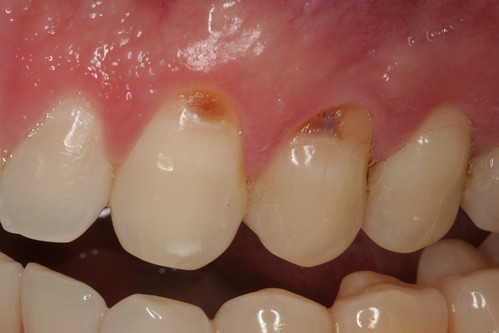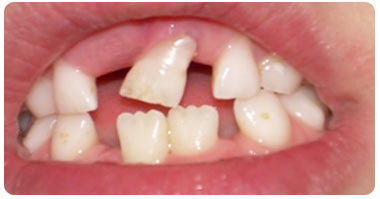In the film “Cast Away,” Tom Hanks’ character is stranded on an island after his airplane crashes. On top of all the problems he has – learning to make a fire, finding food, water, shelter – he has a toothache!
This scared me half-to-death when I saw the film. I wondered, in an emergency, would I be able to take care of a simple toothache?
 With the help of the Special Operations Forces Medical Handbook, we
have highlighted some things that you can do to treat cavities,
fractures, extracted teeth and more, in an emergency. These techniques
should only be used in an emergency and are not a replacement for a
qualified dental professional.
With the help of the Special Operations Forces Medical Handbook, we
have highlighted some things that you can do to treat cavities,
fractures, extracted teeth and more, in an emergency. These techniques
should only be used in an emergency and are not a replacement for a
qualified dental professional.The handbook recommends that you have cotton balls, anesthetic, an explorer, a spoon excavator and a mixing tools. You will need some of these in order to take care of the problems we have listed below.
Anatomy of a tooth
The first thing you’ll need to know about emergency dentistry is the anatomy of a tooth.
A tooth has two major parts – the crown and roots. The crown is the (hopefully) white part that is visible. The roots are embedded in your gums.
The crown has five surfaces: the occlusal (biting) surface, the lingual (tongue side) surface, the facial (cheek side) surface and two contact surfaces that touch the adjacent teeth.
 Cavities
CavitiesSymptoms. If you have a cavity, you’ll feel dull pain in the area. Heat, cold, sweet, or salty foods may enhance the pain. You’ll want to determine on which surface the cavity is located.
Treatment. Cavities can be very tricky to treat because of anesthesia.
The first thing you’ll do is apply an anesthetic agent. Be sure that you are trained on where the injection should be placed – which is near the top of the tooth’s root – in a mucobuccal fold. Do not inject into a blood vessel.
The Medical Handbook recommends the following anesthesia:
- 2% lidocaine with 1/100,000 epinephrine (Xylocaine)
- 0.5% bupivacaine with 1/200,000 epinephrine (Marcaine)
- 3% mepivacaine without epinephrine (Polocaine or Carbocaine)
After you remove the decayed content, wash out the cavity with warm water. Combine zinc oxide (IRM) powder with two or three drops of water – mix until it’s a putty texture. Then place the putty in the hole. If the cavity was on the occlusal surface, have the patient bite a few times to form the putty.
If IRM is not available, you can fill the hole with a cotton pellet impregnated with eugenol.
This is a temporary procedure. Only a dentist can provide definitive care.
 Crown fractures
Crown fracturesYour front teeth are more susceptible to fractures than your back teeth. A crown fracture will be a break in your tooth.
Symptoms. Usually someone with a crown fracture will have sensitivity to heat and cold. They might find tooth fragments in their mouth or feel jagged tooth edges.
Treatment. If the fracture is small, you can smooth the rough edges with an emery board or small flat file.
If the fracture is extensive wash the tooth with warm saline. Then, isolate the tooth with cotton gauze. After you’ve isolated the area, cover the fracture with Zinc Oxide-Eugenol paste (IRM). This will hold for about 6 weeks.
 Dislocated tooth
Dislocated toothSymptoms. You’ll probably notice that your tooth has moved or is wiggling.
Treatment. You can place local anesthetic on the tooth to relieve pain. After you’ve applied the anesthetic, manually reposition the tooth to its normal position. You can then use wire or heavy fishing line to bind the tooth the the teeth next to it. Splint the tooth in place.
 Tooth out of its socket
Tooth out of its socketSymptoms. You may have your tooth in your hand.
Treatment. If the tooth has been saved, do not let it dry out. Do not try and scrape anything off the tooth. Instead, place the tooth in a clean liquid like saline or milk.
Next, administer some local anesthetic to the socket. If there are blood clots in the socket, clean it out with saline solution. Replace the tooth in the socket. Then splint the tooth to the surrounding teeth with wire or heavy fishing line. Be sure to administer some type of pain reliever after replacing the tooth.
Tooth extraction
If you end up having to extract a tooth, after the extraction, compress the sides of the empty socket and place a folded sponge over the socket. Apply light pressure for 60 minutes. Do not rinse your mouth for 12 hours since this may disturb the clot.
I had a tooth ache once and thought I'd try that Tom Hanks method. I but a small block of wood against it and whacked it. that was THE BIGGEST MISTAKE I'VE EVER MADE. From now on, I'll go to the dentist or just hurt. I'm not ever touching my teeth again other than brush or floss.
ReplyDelete